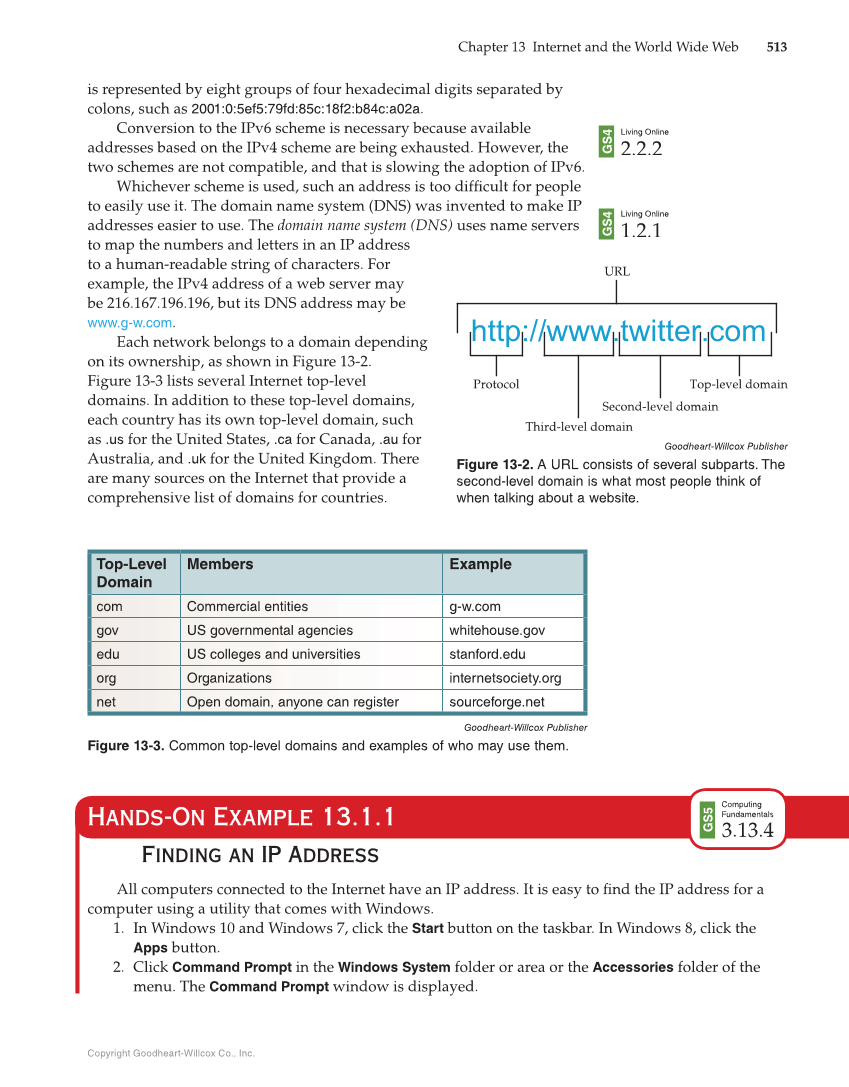Copyright Goodheart-Willcox Co., Inc. Chapter 13 Internet and the World Wide Web 513 http://www.twitter.com URL Protocol Top-level domain Second-level domain Third-level domain Goodheart-Willcox Publisher Figure 13-2. A URL consists of several subparts. The second-level domain is what most people think of when talking about a website. is represented by eight groups of four hexadecimal digits separated by colons, such as 2001:0:5ef5:79fd:85c:18f2:b84c:a02a. Conversion to the IPv6 scheme is necessary because available addresses based on the IPv4 scheme are being exhausted. However, the two schemes are not compatible, and that is slowing the adoption of IPv6. Whichever scheme is used, such an address is too diffi cult for people to easily use it. The domain name system (DNS) was invented to make IP addresses easier to use. The domain name system (DNS) uses name servers to map the numbers and letters in an IP address to a human-readable string of characters. For example, the IPv4 address of a web server may be 216.167.196.196, but its DNS address may be www.g-w.com. Each network belongs to a domain depending on its ownership, as shown in Figure 13-2. Figure 13-3 lists several Internet top-level domains. In addition to these top-level domains, each country has its own top-level domain, such as .us for the United States, .ca for Canada, .au for Australia, and .uk for the United Kingdom. There are many sources on the Internet that provide a comprehensive list of domains for countries. Living Online 2.2.2 Living Online 1.2.1 GS4 GS4 Top-Level Domain Members Example com Commercial entities g-w.com gov US governmental agencies whitehouse.gov edu US colleges and universities stanford.edu org Organizations internetsociety.org net Open domain, anyone can register sourceforge.net Goodheart-Willcox Publisher Figure 13-3. Common top-level domains and examples of who may use them. Hands-On Example 13.1.1 Finding an IP Address All computers connected to the Internet have an IP address. It is easy to fi nd the IP address for a computer using a utility that comes with Windows. 1. In Windows 10 and Windows 7, click the Start button on the taskbar. In Windows 8, click the Apps button. 2. Click Command Prompt in the Windows System folder or area or the Accessories folder of the menu. The Command Prompt window is displayed. Computing Fundamentals 3.13.4 GS5
